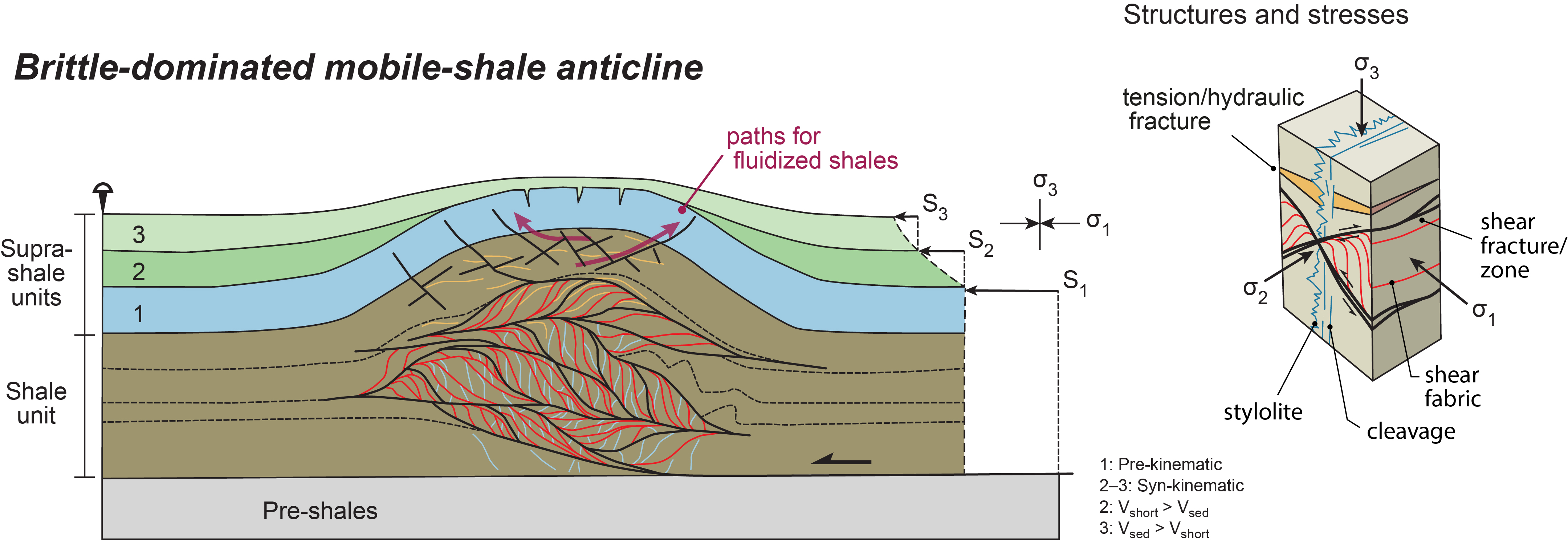Proposal for a Mechanical Model of Mobile Shales
Juan I. Soto, Mahdi Heidari, and Michael R. Hudec
Scientific Reports, 2021, https://www.nature.com/articles/s41598-021-02868-x
Study Summary
Structural systems involving mobile shale represent one of the most difficult challenges for geoscientists dedicated to exploring the subsurface structure of continental margins. Mobile-shale structures range from surficial mud volcanoes to deeply buried shale diapirs and shale-cored folds. Where mobile shales occur, seismic imaging is typically poor, drilling is hazardous, and established principles to guide interpretation are few. The central problem leading to these issues is the poor understanding of the mechanical behavior of mobile shales. Here we propose that mobile shales are at critical state, thus we define mobile shales as “bodies of clay-rich sediment or sedimentary rock undergoing penetrative, (visco)plastic deformation at the critical state.” We discuss how this proposition can explain key observations associated with mobile shales. The critical-state model can explain the occurrence of both fluidized (no grain contact) shales (e.g., in mud volcanoes) and more-viscous shales flowing with grain-to-grain contact (e.g., in shale diapirs), mobilization of cemented and compacted shales, and the role of overpressure in shale mobility. Our model offers new avenues for understanding complex and fascinating mobile-shale structures.
Why is this research important and why do the results matter?
- Mobile shales create challenges for seismic processing, seismic interpretation, drilling, and geohazards analysis.
- A primary source of uncertainty in interpreting these structures is a poor understanding of the mechanics of mobile shale.
- We use concepts from soil mechanics and information on the mechanics of consolidated shales to propose that mobile shales are at critical state.
- At critical state, flow in shales generates an anastomosing network of highly-sheared material surrounding lenses in which previous structures are preserved. Both brittle and ductile structures may exist in mobile shales.
- No diagenetic threshold for shale mobility exists.
- Critical state is much easier to reach if overpressures are present in shales, because overpressures decrease the mean effective stress. This is consistent with information from seismic velocities, which suggest that most (if not all) mobile shales are overpressured.
Links
- https://www.beg.utexas.edu/agl
- https://www.nature.com/articles/s41598-021-02868-x
- https://rdcu.be/cCYR2
